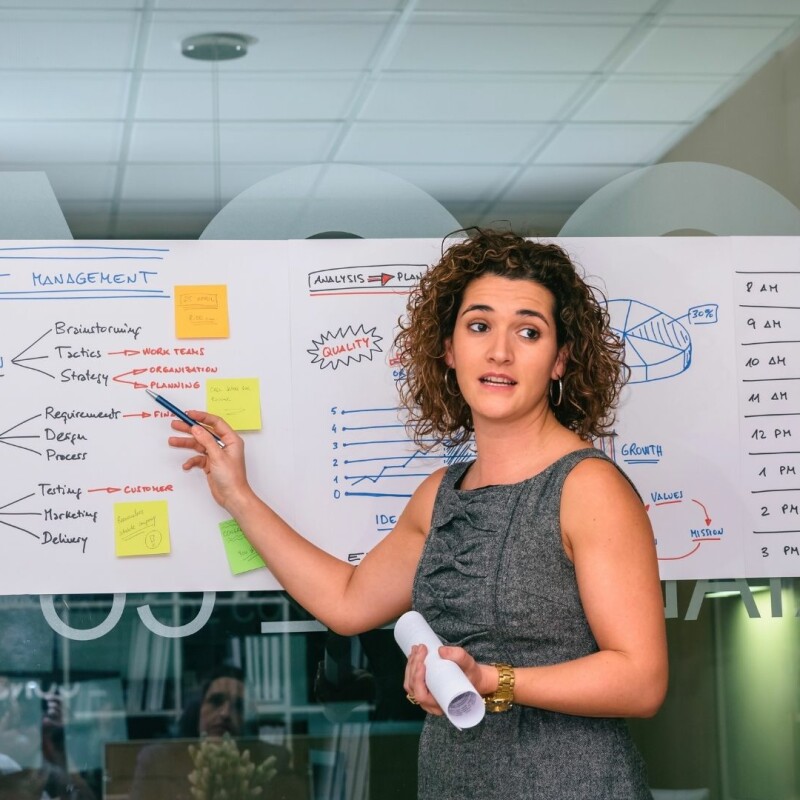All Things Admin Joins ASAP. Learn More ›
Five Tips for Quick Note-taking in an Administrative Job
April 5, 2022

Richard Branson, the founder of Virgin Group, once said “If you don’t write your ideas down, they could leave your head before you even leave the room.”
That’s a lot of pressure for anybody, but it’s extra pressure for the person whose job it is to take minutes or notes for meetings and presentations. Taking down everything won’t just help with remembering what the goals and expectations are at work, they can save time, provide context, and even open the note-taker up to new and better opportunities in the company. An administrative job is more than just taking notes, it’s distributing information and making sure everyone understands the goals.
Looking for more resources? Check out:
So, how to do it right? Should you use shorthand? Should you record notes digitally or handwritten on paper?
Here are some things we suggest for the next time you’re asked to take notes or minutes for the next team meeting:
1. Use Shorthand
Looking at a page of shorthand may feel like you’re looking at a bunch of scribbles like someone is trying to get their pen to work, but in reality, it’s a language of symbols that makes writing down notes quicker and with fewer words.
There are most likely digital mediums for using shorthand too. While standard writing yields 20 to 30 words a minute, speedwriting with short hand can give you 200 words a minute.
If you think you need to level up your note-taking and shorthand sounds like a skill you want in your tool belt, check out ASAP’s webinar for The BakerWrite Method of Speedwriting at: https://www.asaporg.com/training/webinars/speedwriting-the-bakerwrite-method.
Having this skill doesn’t only look great on a resumé, it’s a tool that employers will find impressive and invaluable.
2. Go Analog
Technology is part of basically everything we do these days, including how we communicate with each other and where we do most of our work. Because of that, it seems like a no-brainer that that’s how you’d take notes at meetings, too.
Not so fast.
A study from the University of Tokyo proposes that handwriting on a piece of paper improves memory because of how you’re spatially and temporally aware of how you’re writing down each unique thought.
3. Set Up Your Notes Beforehand
It’s a good idea to do a little bit of research about what you’re going to talk about; doing so will help you understand the context of what you’re discussing so you’re not hearing some terms and concepts for the very first time at the meeting.
Prepare a section in your notes where you can take down the most important details as soon as you hear them, like the deadline, budget, the project’s overall goal, the lead for the project, and the people working on it. Keeping this information in its own spot will make it easier to find later on.
For interviews and weekly meetings, jot down a list of questions you have so you don’t forget and can get all that information at once.
4. Break Down the Word Wall
No matter how “in the zone” you’re feeling when you write your notes, going back and being confronted with a huge block of text can be discouraging.
If you have a hard time staying focused with just regular note-taking, try a different format for note-taking like the Cornell Method, a Mind Map or Word Cloud, or color coding!
5. Reread Right After!
Going back to organize your thoughts later is essential on many levels; you’re reacquainting yourself with the information as you organize it and you might find blank spaces with missing information or errors.
Going back over your notes while the meeting is fresh in your mind will help you fill in any of those gaps or fix any mistakes.
Are you an administrative assistant with a passion for helping your business run smoothly? Let the experts at ASAP help you hone your skills and even learn some new ones with training conferences, webinars, and certification programs for administrative assistants, executive assistants, administrative staff, coordinators, and more!
Join the Conversation
Welcome to the ASAP Circle, a community platform for peer-to-peer conversation on trending topics, professional challenges, and shared experiences. We even have designated spaces for weekly Tuesday Coffee Breaks.










